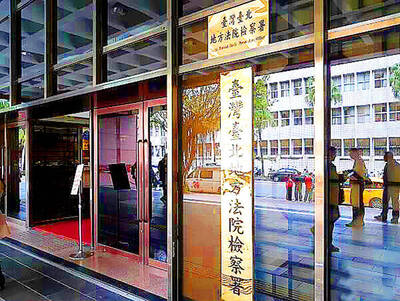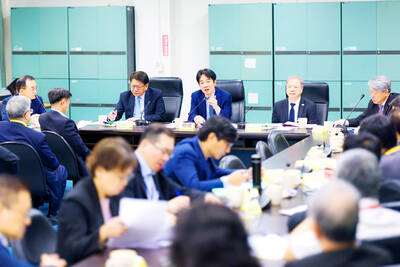Eager not to lose its long-held position at the leading edge of solar-cell technology to foreign competitors, Japan is promoting the further development of the technology, which is regarded as one of the strategically important industries of the future.
“We can already feel the effects. Sales are increasing,” said Tetsuhiro Maeda, vice-president and general manager of the solar division of Sanyo Electric Co.
The company, which is soon to merge with electronics giant Panasonic Corp, hopes to recover market share lost in recent years and is to a large extent pinning its expectations on the German market.
“Both the government and we, the companies, are working hard so that Japan gains ground in the solar energy field again,” Maeda said.
After the oil crisis in the 1970s, Japan was among the first countries to promote the use of solar energy for producing hot water and electricity, turning the Land of the Rising Sun into the world’s largest producer of solar cells in the process.
GIVING IN
However, in recent years, Japan’s government has given into the demands of electricity providers opposed to being required to buy solar-generated electricity at higher-than-market prices. When subsidies were scrapped in 2005, the market tanked.
Suddenly, Japan lost ground to the competition abroad, with the German Q-Cells group replacing Japan’s Sharp Corp as global market leader for solar cells.
Sanyo suffered the same fate. While holding seventh position in 2007 in terms of solar cell production with a market share of 4.4 percent, Sanyo’s market share fell to 3 percent and the company’s global ranking dropped several notches to 12th one year later.
Adding to the solar-cell industry’s misery is the global economic downturn, which has hit the country’s entire electronics sector hard. In the business year ended March 31, Sanyo, the world’s largest producer of rechargeable batteries, was in the red.
Net losses for the business year were ¥93.22 billion (US$968 million) following a net profit of ¥28.7 billion the year before.
In the current business year, Sanyo aims to be back in profit again. By focusing on rechargeable batteries and solar energy, the company hopes to make a profit of ¥7 billion.
GERMANY
For the business year beginning next April Sanyo wants to increase its market share in solar cells to 8 percent and raise it to 10 to 15 percent in the subsequent years.
“For us, Germany is the market with the biggest potential,” Maeda said.
The German market is attractive for Japanese companies, as high quality and reliability are appreciated there, he explained.
Sanyo still sees “much space” to expand capacity at its European production site in Hungary, and while it does not plan any further plants in Europe, a factory is being expanded in Mexico.
Both sites are expected to churn out solar cells at full capacity by next year or 2011, Maeda said. By 2014 or 2015, according to the ambitions plans, production is planned to reach more than 1 gigawatt of solar-cell production.
But to reach that goal, further production sites are needed, Maeda said, but stressed that Sanyo was still focused on its core markets in Europe, Japan and North America. China, for the time being, is not central to the company’s strategic considerations.
Even if the Chinese market were to grow this year, it would be unlikely to exceed 100 or 200 megawatts. Moreover, the market is already covered by large Chinese producers.
“We doubt that we can gain a foothold there,” Maeda said, because the Chinese government is subsidizing the domestic market.
Meanwhile, Sanyo is busy cutting costs, increasing further the efficiency of its products and expanding domestic production capacity, by enlarging its biggest Japanese plant, located in Shiga prefecture.
Early next year, the plant will run at its full 100-megawatt production capacity, Maeda said.

INVESTIGATION: The case is the latest instance of a DPP figure being implicated in an espionage network accused of allegedly leaking information to Chinese intelligence Democratic Progressive Party (DPP) member Ho Jen-chieh (何仁傑) was detained and held incommunicado yesterday on suspicion of spying for China during his tenure as assistant to then-minister of foreign affairs Joseph Wu (吳釗燮). The Taipei District Prosecutors’ Office said Ho was implicated during its investigation into alleged spying activities by former Presidential Office consultant Wu Shang-yu (吳尚雨). Prosecutors said there is reason to believe Ho breached the National Security Act (國家安全法) by leaking classified Ministry of Foreign Affairs information to Chinese intelligence. Following interrogation, prosecutors petitioned the Taipei District Court to detain Ho, citing concerns over potential collusion or tampering of evidence. The

Seventy percent of middle and elementary schools now conduct English classes entirely in English, the Ministry of Education said, as it encourages schools nationwide to adopt this practice Minister of Education (MOE) Cheng Ying-yao (鄭英耀) is scheduled to present a report on the government’s bilingual education policy to the Legislative Yuan’s Education and Culture Committee today. The report would outline strategies aimed at expanding access to education, reducing regional disparities and improving talent cultivation. Implementation of bilingual education policies has varied across local governments, occasionally drawing public criticism. For example, some schools have required teachers of non-English subjects to pass English proficiency

‘FORM OF PROTEST’: The German Institute Taipei said it was ‘shocked’ to see Nazi symbolism used in connection with political aims as it condemned the incident Sung Chien-liang (宋建樑), who led efforts to recall Democratic Progressive Party (DPP) Legislator Lee Kun-cheng (李坤城), was released on bail of NT$80,000 yesterday amid an outcry over a Nazi armband he wore to questioning the night before. Sung arrived at the New Taipei City District Prosecutors’ Office for questioning in a recall petition forgery case on Tuesday night wearing a red armband bearing a swastika, carrying a copy of Adolf Hitler’s Mein Kampf and giving a Nazi salute. Sung left the building at 1:15am without the armband and apparently covering the book with a coat. This is a serious international scandal and Chinese

NEGOTIATIONS: The US response to the countermeasures and plans Taiwan presented has been positive, including boosting procurement and investment, the president said Taiwan is included in the first group for trade negotiations with the US, President William Lai (賴清德) said yesterday, as he seeks to shield Taiwanese exporters from a 32 percent tariff. In Washington, US Trade Representative Jamieson Greer said in an interview on Fox News on Thursday that he would speak to his Taiwanese and Israeli counterparts yesterday about tariffs after holding a long discussion with the Vietnamese earlier. US President Donald Trump on Wednesday postponed punishing levies on multiple trade partners, including Taiwan, for three months after trillions of US dollars were wiped off global markets. He has maintained a 10 percent